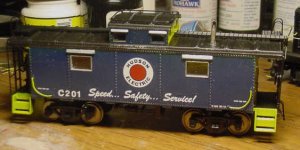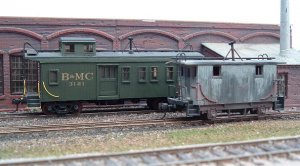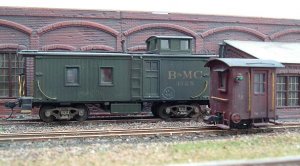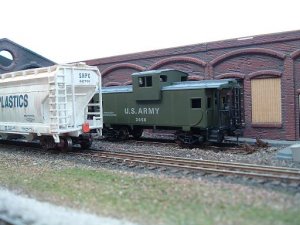Canadian railroads used them, too, but called them 'vans'. Another important function of the caboose was that of a mobile office. On many railroads, the crew also consisted of a freight conductor who was responsible for the train, its loads, and the paperwork associated with each freight car. A common item in cabooses was either a desk that dropped down flat against the wall or a fixed table that served the same purpose. Cabooses also had a pressure gauge to monitor the brake line air pressure, radios, and coal stoves, wood stoves, or kerosene stoves. The cupola, that small structure mounted on the roof, was used to look out across the train and spot problems, but when modern boxcars were built taller, the solution was to build cabooses with bay windows on the sides. Some cabooses had side doors, others were nothing more than old passenger cars or converted boxcars. Some had square windows, others, like on the Pennsylvania RR, had round windows. Here's a model of a famous US caboose used by many railroads...the NE6 design.





